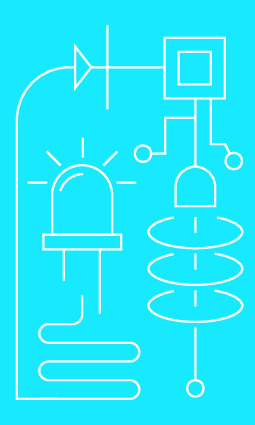|
|
|
| Module code: E2926 |
|
|
2V (2 hours per week) |
|
3 |
| Semester: 2 |
| Mandatory course: no |
Language of instruction:
German |
Assessment:
Oral examination
[updated 16.11.2023]
|
E2926 (P211-0302) Electrical Engineering and Information Technology, Master, ASPO 01.04.2019
, semester 2, optional course, technical
|
30 class hours (= 22.5 clock hours) over a 15-week period.
The total student study time is 90 hours (equivalent to 3 ECTS credits).
There are therefore 67.5 hours available for class preparation and follow-up work and exam preparation.
|
Recommended prerequisites (modules):
None.
|
Recommended as prerequisite for:
|
Module coordinator:
Prof. Dr. Martin Buchholz |
Lecturer:
Dr.-Ing. Matthias Flieger
[updated 18.10.2023]
|
Learning outcomes:
The aim of this lecture is to impart practical knowledge on achieving market access for both established and innovative technologies with a focus on the regulatory processes in the European Union and other regions of the world. Students are given insight into the requirements and procedures for testing and certification and, after completing the module, are able to understand the processes required for achieving market access and to forecast the access requirements based on existing product characteristics. The focus lies on the practical communication of regulatory requirements while at the same time creating a basic technical understanding of the technologies under consideration, how they work and the parameters relevant to testing. Finally, the market access processes are explained using specific practical application examples.
[updated 16.11.2023]
|
Module content:
- Fundamentals of European, supra-regional and international market access for telecommunications and information technology products
- Regulatory framework for market access of electronic products in the European Union (legal framework, directives, regulations, delegated acts and their significance)
- Radio Equipment Directive (2014/53/EU) - basis for the market access of radio products, scope, essential requirements, conformity assessment procedures, CE marking, obligations of economic operators, exemptions
- Access requirements in other regulated markets (USA, Canada, Japan)
- Global market access - International Type Approval
- Standardization, responsibilities and structure
- Technical conformity assessment of products with and without radio interface(s)
- Basic requirements regarding radio spectrum, health, electromagnetic compatibility and product safety
- New basic requirements in the EU: Cyber security, common charger and access to emergency services
Basics of technologies and their application:
o Classic short-range device technologies: WLAN 2.4 GHz, Bluetooth, Zigbee
o Innovative technologies: Further development of WLAN 5 GHz, WiGig at 60 GHz
o Mobile communication technologies: GSM, LTE, 5G New Radio (FR1), 5G mmW (FR2)
o Sensor applications with wireless connection (HRC robotics, smart home and smart factory, self-driving means of transport, smart metering)
o Automotive applications (modern access systems, radars for distance detection and interior monitoring, Car2X communication)
o Applications of wireless technologies in medical technology (computer-assisted surgical procedures, coupling of medical systems, telemedicine)
o Complementary technologies: Battery systems and their requirements for testing and transportation, wireless power transfer,
antenna technologies
- Certification in practice:
o Evaluation of radio products using the example of established radio technologies (Bluetooth, WLAN, mobile radio, radar applications)
o Certification of new technologies using the example of UWB applications
o On the border to optics: Certification of terahertz technology
o Certification of proprietary technologies for which no testing standards exist
[updated 16.11.2023]
|
Teaching methods/Media:
PC, video projector, blackboard
[updated 16.11.2023]
|
Recommended or required reading:
Krey, Volker; Arun, Kapoor: Praxisleitfaden Produktsicherheitsrecht, Hanser, 2015, 2. Aufl.
Ostermann, Bernd: Abkommen der Europäischen Gemeinschaft über die gegenseitige Anerkennung von Konformitätsbewertungen, Verlag Dr. Kovac, 2002
[updated 16.11.2023]
|


